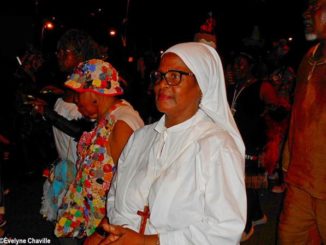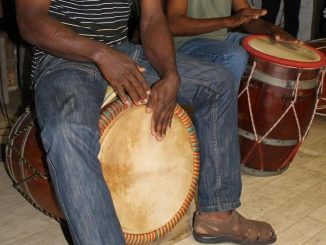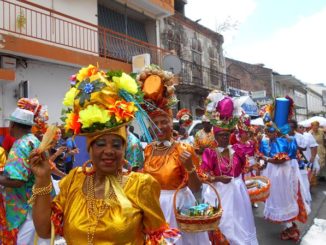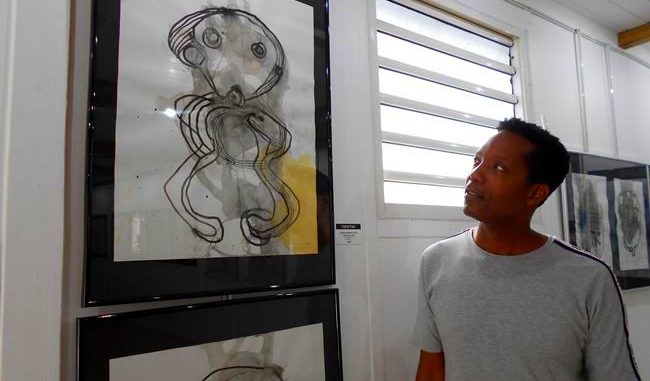
From November 24 to 29, Concept’Art proposed “Contrast”, an exhibition composed of works by Micheline Souprayen and Jérôme Sainte-Luce, at the gallery L’Art s’en Mêle in Le Gosier. Even though it was a joint exhibition, we chose to give the floor separately to these two artists to fully explain their approach.
Born in Perpignan, Jérôme Sainte-Luce has his family roots in Trois-Rivières. After obtaining his degree in applied arts in France and following various training courses, notably in Spain, he became a professional visual artist in 2009. During the exhibition “Contrast”, he explained, among other things, the meaning of the presence of Amerindian culture through his works.

Kariculture.net : Here, there are several works entitled “Lèspwinèg” (Negro Spirit, in English), we know it’s a collection, how many pieces does it have?
Jérôme Sainte-Luce : “Lèspwinèg” is a collection of drawings that started in 2017 and that I do on paper and fabric in priority. There are a lot of pieces because, in principle, I draw when I feel like it, I work in series. I can start, for example, a series of 15 drawings and then I will make variations, so when you ask me, how many are there? There are quite a few. But when I have to do an exhibition, I select what I want to show. In this “Contrast” exhibition, there are about twenty. When I saw some of Micheline’s drawings, I tried to do something that was a little in tune with the colours.
Kariculture.net : These drawings have the same name and a different number, why?
J. S.-L. : Yes, I give them a number, it’s as if I was numbering spirits. They remain, above all, spirits.
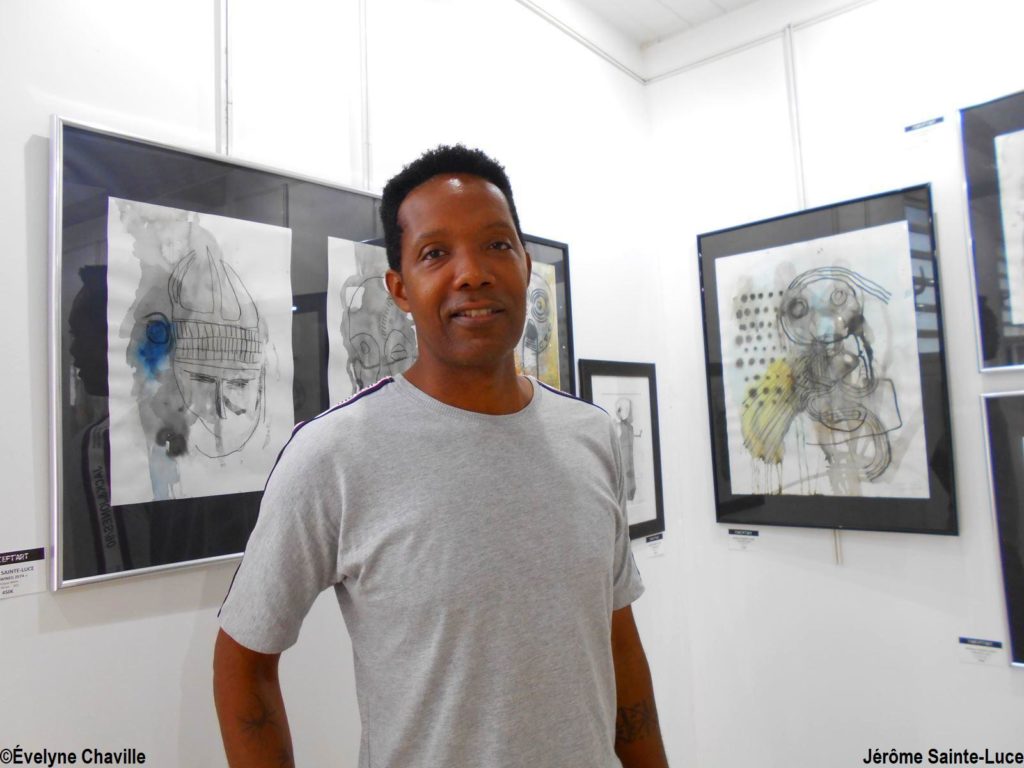
Kariculture.net : What does the “Spirit” symbolize for you?
J. S.-L. : It is the Memory (with a capital M) of something that remains. I’m always fascinated by how we talk about a deceased loved one years or generations later. One has the impression that his name, things about him come to life again in memories, evocations etc.
Kariculture.net : You, it is by drawing them that you bring the “Spirits” back to life?
J. S.-L. : By drawing them, I don’t know if I bring them to life, but I try to represent them. There’s a poem by Diop that basically says “the dead have never left, they are among us etc.”.
Kariculture.net : The title of the exhibition is “Contrast”. Is it a contrast between life and death?
J. S.-L. : That’s it. Finally, is there really a contrast? That’s the question, because if there is no life, there is no death, and if there is no death, there is no life.
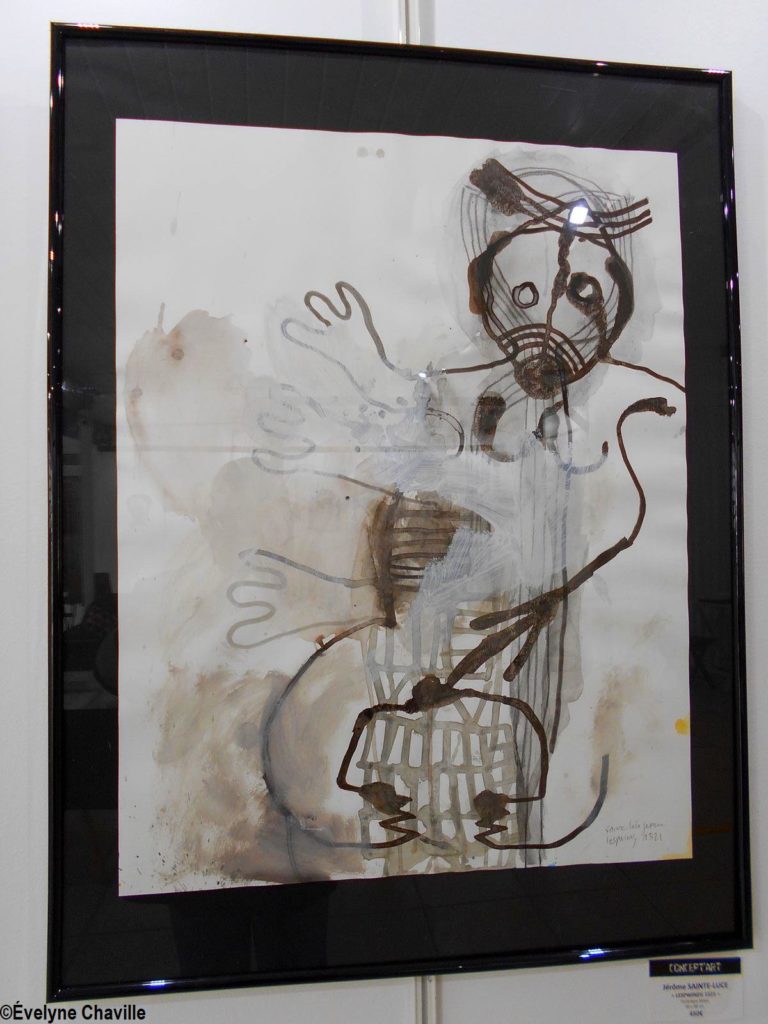
Kariculture.net : Why “Lèspwinèg”? Why did you choose this term?
J. S.-L. : I already wanted a Creole term because, when I studied abroad, especially in Spain, I was studying a lot of foreign artists, but when I came back here, I really wanted to question me about what I am in Guadeloupean society, what I can bring to it. So I thought that instead of making a title in French, why not familiarize myself with my own words? “Lèspwinèg” is an expression I often heard when I was a child, but it was a bit pejorative. For example, my grandparents used to say “Ah, i ni lèspwinèg!” (He has a Negro spirit/mind!). I decided to use that expression again and give it the identity I wanted. It is composed of the words “Lèspwi” (Spirit/Mind) and “Nèg” (Negro), and I think a lot about the soul, about the cycle of life and death, since my starting point is the Amerindians and they already had this questioning, rituals around this theme. Moreover, I come from Trois-Rivières, a land where Amerindians lived…
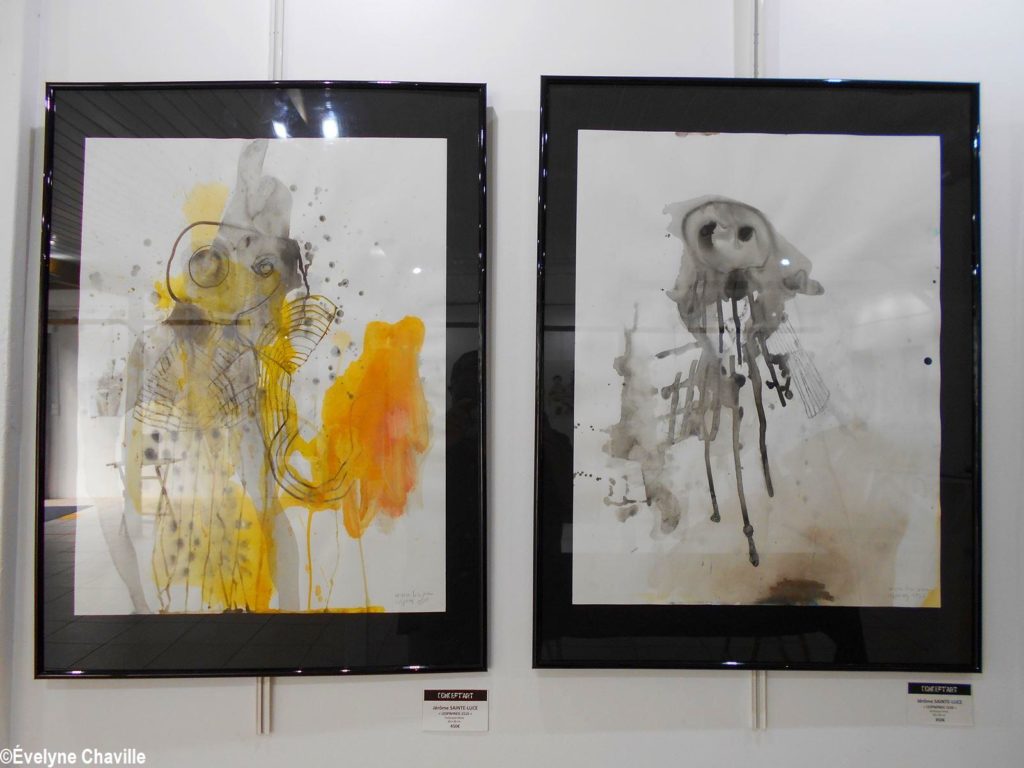
Kariculture.net : Can we say that there is a “contrast” between the “Nèg” or “Negro” or “Black” that we find in the names of the paintings and the Amerindian that we see in these same paintings?
J. S.-L. : It’s a metaphorical Amerindian that I interpret from engravings I saw in my childhood, after I do a work of interpretation, fantasies etc. If there is a contrast between the word “Lèspwinèg” and the Amerindians, I answer yes and no, it depends on how one sees it. I do not have the impression that there is a contrast because I have my face shoved in it, I think I’m watching a story.
Kariculture.net : Could you have said “Lèspwikalinago”?
J. S.-L. : I could have said “Lèspwikalinago”.
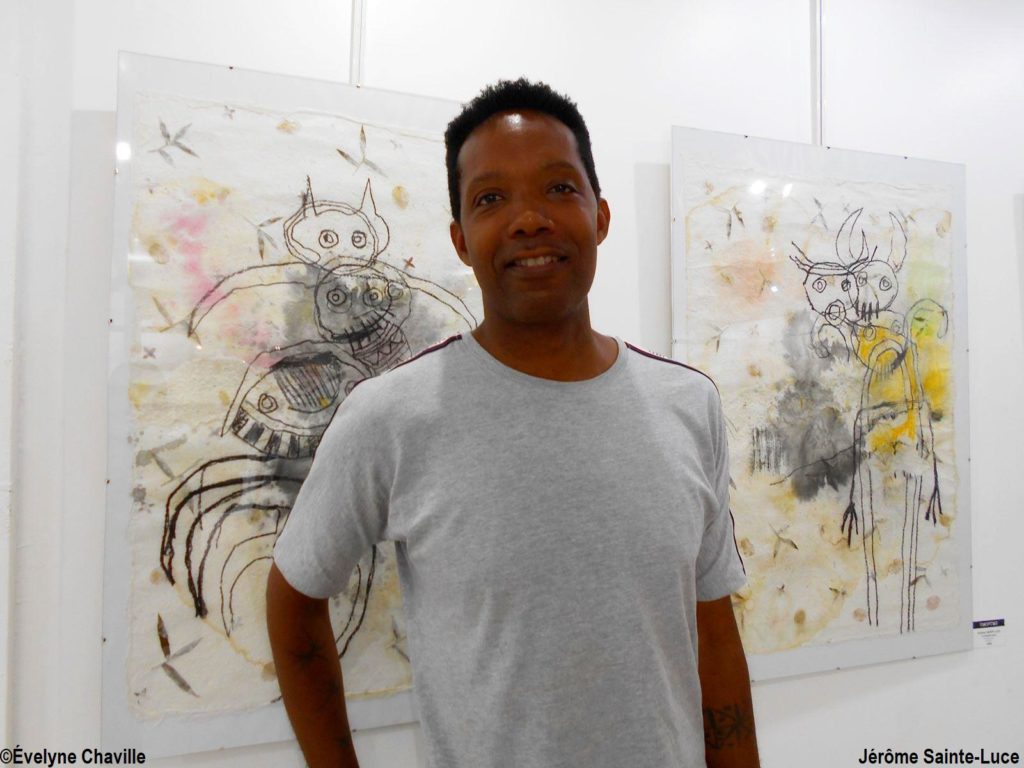
Kariculture.net : Is it because you think that at one point the Kalinagos met and got together with the African slaves who were brought here?
J. S.-L. : Yes, and I come from that. I don’t define myself as Kalinago, even if there are things that belong to this culture in our Creole, our culinary art and so on. I’m going to consider myself more a “Nèg” before considering myself a “Kalinago” when all this is a bit related.
Kariculture.net : What does the paint drips represent in your work?
J. S. L. : I work a lot with acrylic and Indian ink. I often use the technique of dripping because water is a fundamental element for me because of the water ritual of the Amerindians, who lived near rivers for childbirth, fishing, etc.
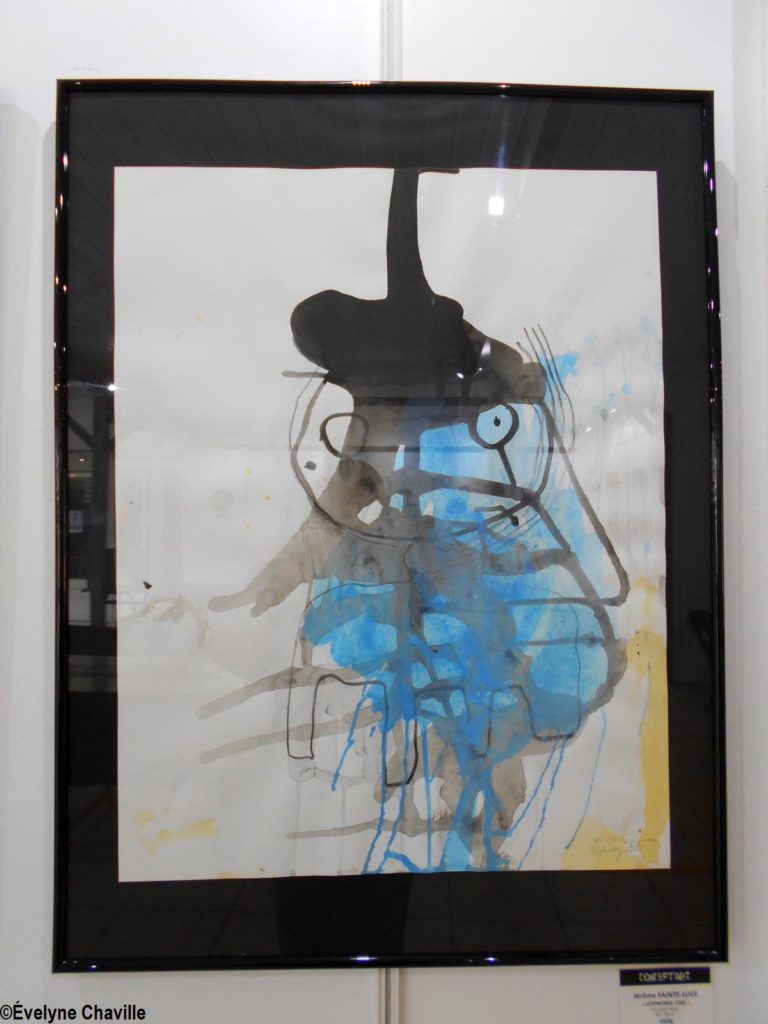
Kariculture.net : The colours are rather sober but there is a little bit of blue and yellow, it’s intentional?
J. S. L. : I tended to use the yellow color a lot, blue came later. Yellow symbolizes everything that is energy, life, light. I think it’s a warm colour, a colour that envelops.
Kariculture.net : Here, there is a material change, it’s another type of paper. Why this change if the theme of the series is the same?
J. S. L. : It’s handmade paper which has a more vegetable side, which is colder and warmer at the same time. I like the texture of this paper, we can feel that it’s something closer to nature with its roughness. I am passionate about all types of paper. When I was in Japan, I used to look at all papers because the Japanese are really very good as regards the fibers (…).
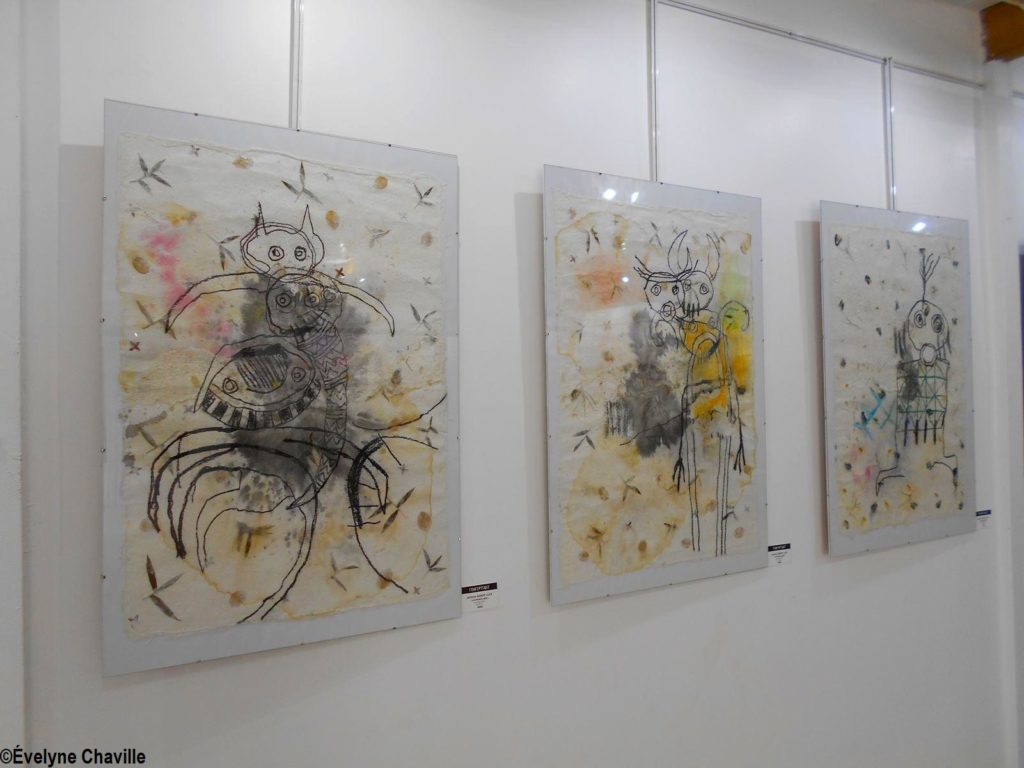
Kariculture.net : Here, why do your characters wear horns?
J. S.-L. : The Amerindians didn’t wear horns, they had a kind of “rings”. We are Americans and Africans at the same time, and when I was doing those “rings”, I thought they looked like horns, so I started to do horns. I learned that in Africa, horns symbolize doors to another world. Here in Guadeloupe and in the Caribbean, in carnival, we see masks with horns too; it’s the African imprint.
When I work I have no models, I see things, I let myself go, there is no real plan. It’s fun at first, there must be a playful dimension, after I discover what I did.
Kariculture.net : What time do you work?
J. S.-L. : I work in the evening, it’s quiet.
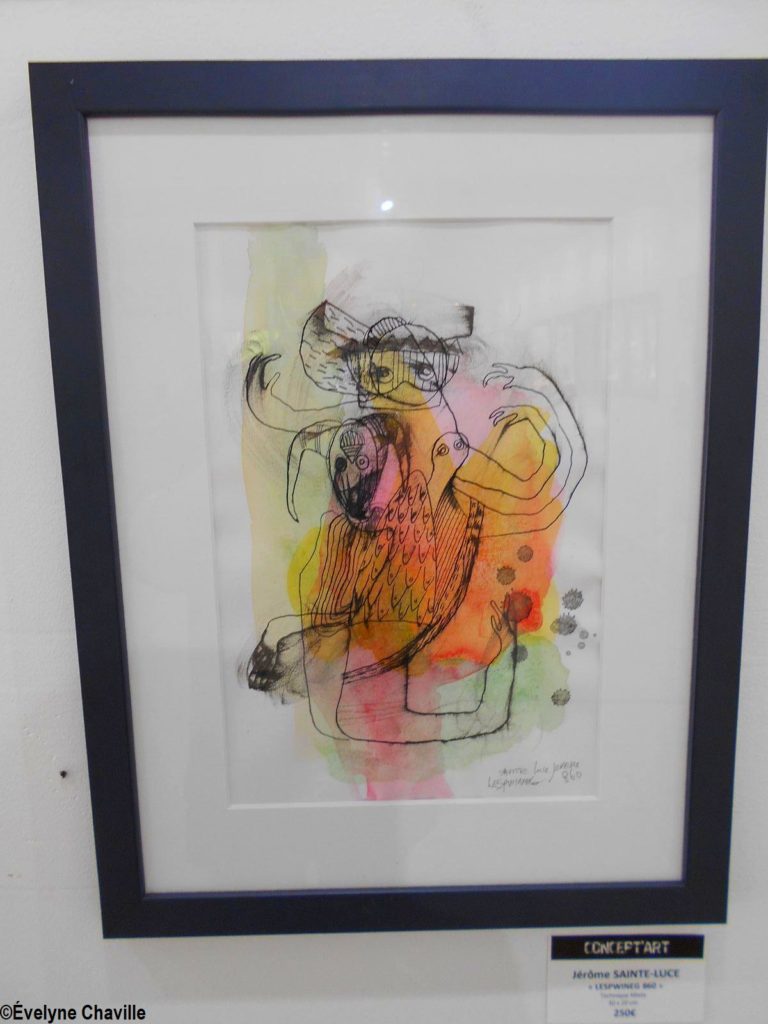
Kariculture.net : Here, is it another technique?
J. S.-L. : It’s the printing and overprinting technique. I work blind, I have two pieces of paper, I put paint on both of them, I press one on the top of the other then I peel them off. It’s spontaneity and then I discover the results. There are people who tell me it’s good, who ask me the name of this technique when chance is a big part of it. In my work, I like the rocky aspect, the first gestures, the accidents…

Kariculture.net : Did you use your imagination during lockdown? Did you paint?
J. S.-L. : During lockdown, I didn’t work, I didn’t want to. I don’t work under pressure. However, after lockdown, I did things. Friends tell me that artists probably worked a lot during that period because we were in an anxiety-provoking situation. I’m not. I know that there are artists who work when they don’t feel well. Some people also tell me that they have the impression that I’m suffering and I put my pain into the work when that’s not the case. When I’m not well, I don’t start painting, I go to sleep.
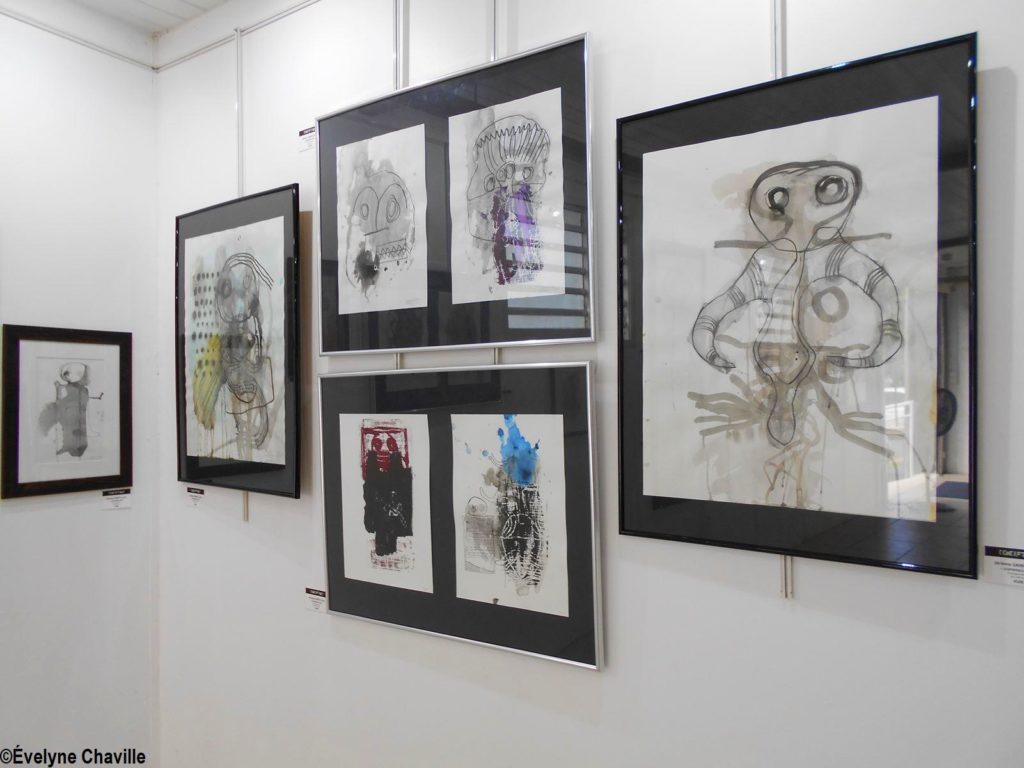
Kariculture.net : The title of this joint exhibition is “Contrast”, how do you explain this contrast through your works and those of Micheline?
J. S.-L. : Micheline and I reflected on the word “contrast”. I see this title as a provocation because there are not so many contrasts, they may exist in our way of thinking, our graphic style, our techniques; for example, when I used a material like charcoal in my hand while Micheline used acrylic and the brush, something softer, more sensual.
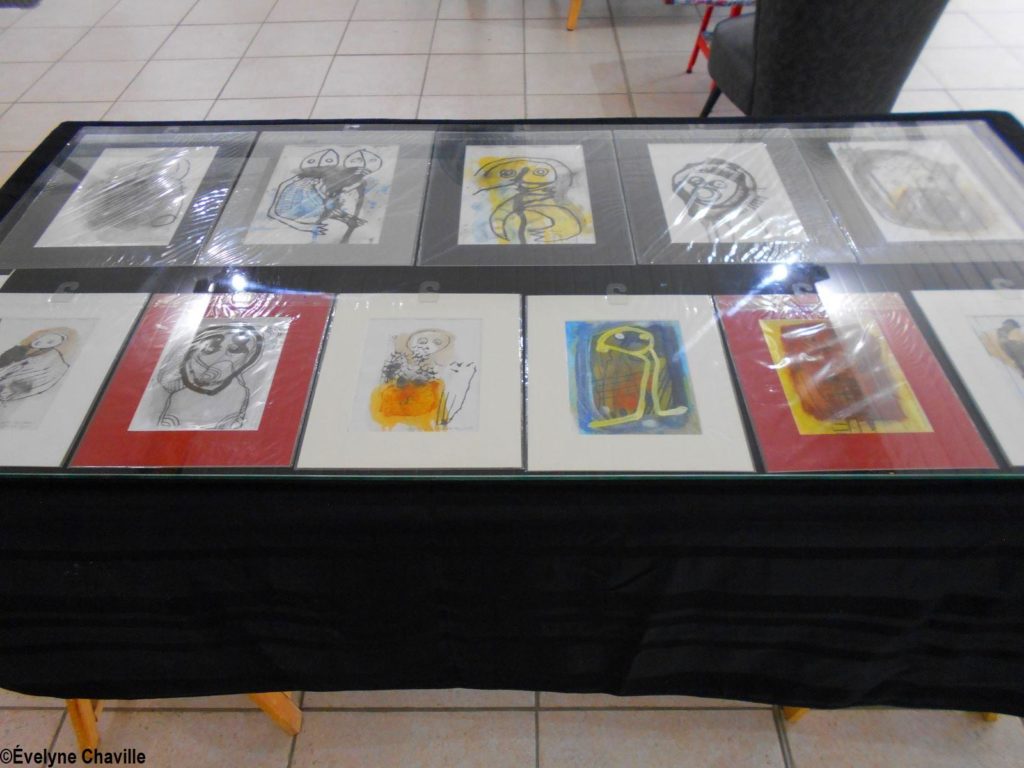
Kariculture.net : With the Covid-19 epidemic, there was a boom in online exhibitions, is it important for you to come and visit a physical exhibition?
J. S.-L. : I asked myself this question since I had to participate in digital exhibitions during lockdown because artists were forced to look for an alternative way to show their work. But I admit that physical exhibitions are important because we do exhibitions to get out of our homes, our studios, to meet people, to talk with them, they explain to us what they feel, if they like it or not. It’s a sharing, a contact between artists and the public. With the digital exhibition, this contact is not the same and, even if we have access to the whole planet, the human side is not there. Seeing a painting digitally and physically does not have the same effect. However, the two must coexist.
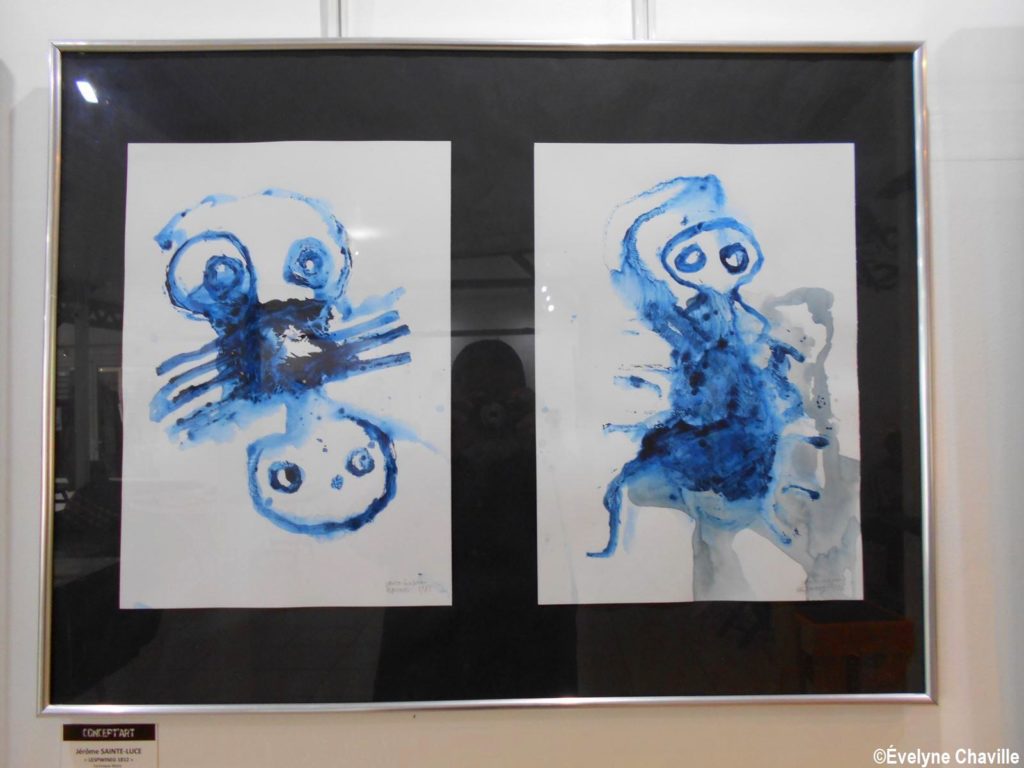
Kariculture.net : We keep telling that artists are paying a heavy price for this coronavirus epidemic, how do you see the “cultural world after”?
J. S.-L. : The cultural world will start again, but it will take time, a questioning of political power, of the people who are the referents in culture will be necesary… I don’t think it will start up again in the same way, but I would not be surprised if we find the same “old habits”, such as information that does not reach us, etc. It’s also up to us artists to be much more attentive, to seek information, not just to be artists.































